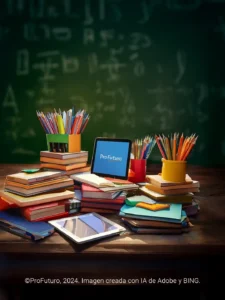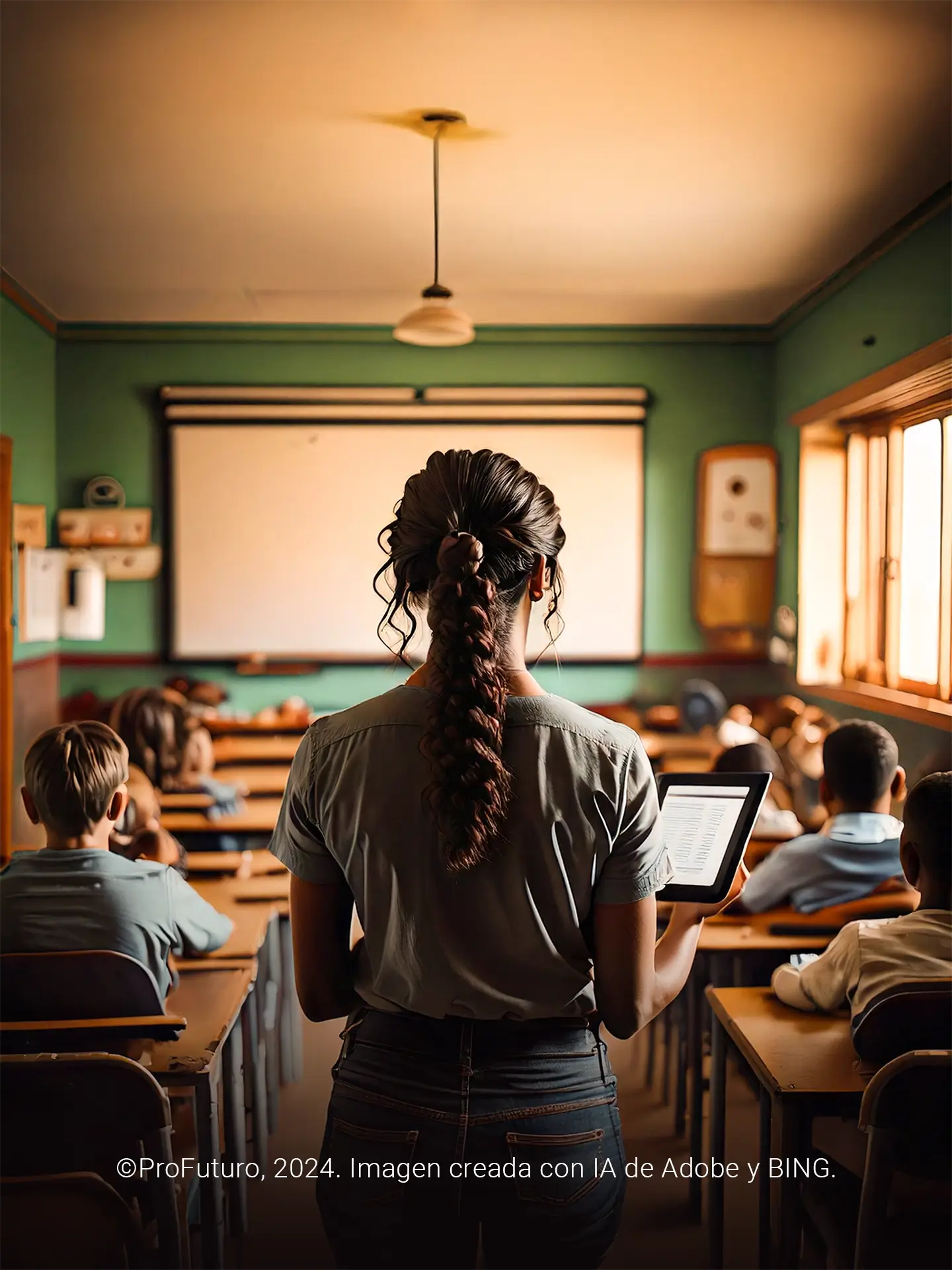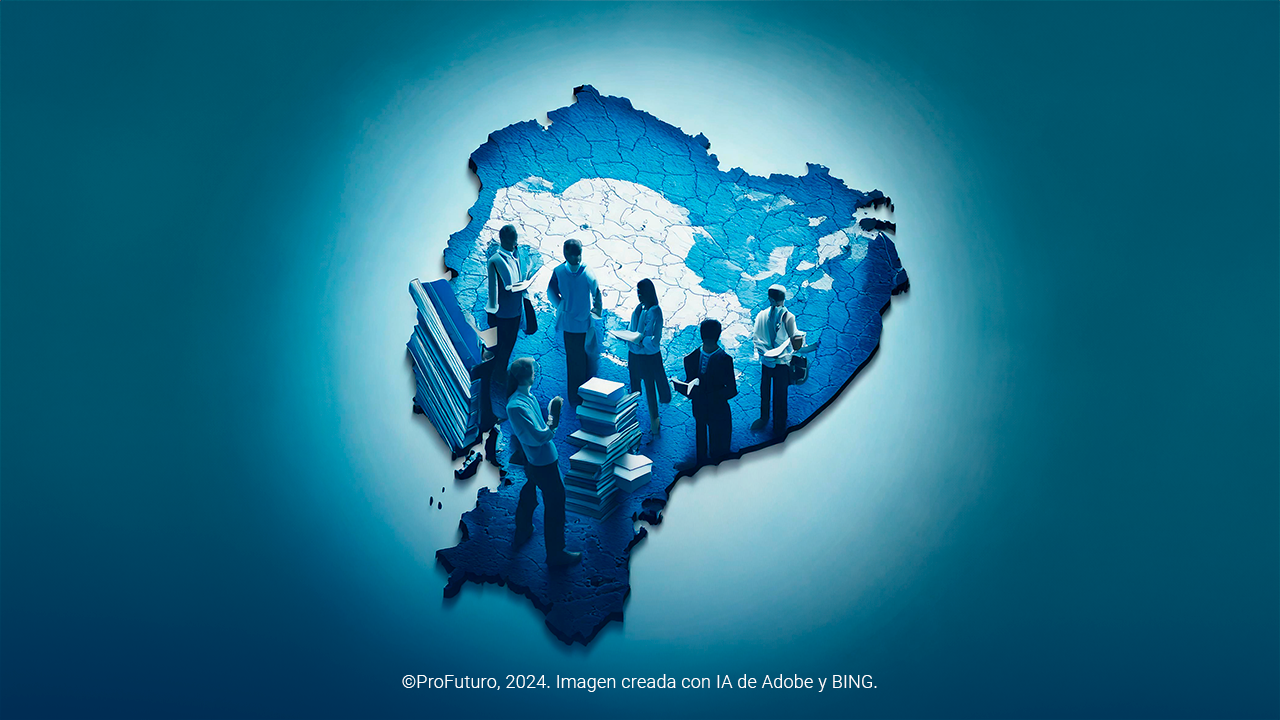
Over the past decade, education has experienced an explosion of new technological possibilities, ranging from interactive applications to online assessment platforms and, more recently, the rise of generative artificial intelligence—with its evident distortions and unresolved challenges. Some see this phenomenon as a revolution democratizing access to knowledge. In certain cases, it is logical to think that devices and internet access provide students with opportunities to access information that would otherwise be out of reach. Who hasn’t imagined a virtual classroom where boys and girls from a rural community can connect with interactive learning experiences? This dream, which just a few years ago seemed like a futuristic narrative, has begun to materialize through concrete projects.
One such initiative is the ProFuturo Foundation, which six years ago set out to introduce digital tools in communities and environments with limited access to technological infrastructure. Its digital education program went far beyond merely distributing tablets or computers—it placed a strong emphasis on teacher training and ongoing support as fundamental pillars of its strategy.
Given this, an inevitable question arises: to what extent do these projects contribute to a tangible transformation in teaching methods? To answer this, the article, signed by Miguel Galbis, analyzes data from various internal and external evaluations of the program conducted between 2022 and 2024.
Teachers and Digital Skills: Are We Ready?
As mentioned earlier, the ProFuturo program is based on a fundamental principle: improving the educational process is only possible if teachers have the necessary tools to integrate technology into their pedagogical practice. To achieve this, the program has developed an intensive training strategy. In 2023 alone, it trained more than 195,000 teachers through 500 courses, with an average of 30 hours per participant and a completion rate of 74%.
The results of these training programs reflect a high level of satisfaction among participants. According to the 2023 annual survey, teachers rated key aspects—such as content quality, platform usability, and resource usefulness—between 9 and 10 out of 10. In Mexico, for example, 89.5% of participants in the Digital Teaching Skills Diploma program expressed high satisfaction with their training.
The Impact of These Efforts on Teachers’ Digital Skills
The impact of this initiative is evident in the improvement of teachers’ digital competencies. In Africa, 68% of participants in the Digital Skills and Community Leadership for Teachers and Students program successfully passed the final assessments, with an average 30% improvement in their results. Similarly, in Ecuador, 60% of teachers showed significant progress in their digital skills, while 59% positively self-evaluated their progress two months after completing the training.
Impact measurement indicates that by 2024, the average level of teachers’ digital competencies increased by 9.94%, with improvements recorded in 58% of the evaluated teachers. In Brazil, the teacher training program in Mato Grosso raised the percentage of teachers with intermediate or high digital proficiency from 26.7% to 57.6%. In Ecuador, those who completed 150 or more training hours between 2020 and 2023 saw up to a 17% improvement in their digital skills—an essential factor in the post-pandemic context.
Beyond developing teachers’ competencies through training, the program has successfully fostered a culture of classroom application. In Africa, 88% of trained teachers expressed their intention to implement innovative methodologies in their teaching, while in Ecuador, the applicability of the training received an average rating of 9.23 out of 10. Additionally, in Ecuador, 82% of trained teachers obtained official recognition and certification of their training hours from the Ministry of Education.
These figures confirm that digital training not only strengthens teachers’ skills but also promotes the adoption of new pedagogical strategies with a direct impact on educational quality.
The ProFuturo program is based on a fundamental principle: improving the educational process is only possible if teachers have the necessary tools to integrate technology into their pedagogical practice.
Transformed Methodologies: What Do Digital Resources Contribute?
Another key aspect concerns how technology is woven into teaching and learning dynamics. Some believe that digitizing a textbook or conducting an online exam is enough to claim a methodological shift. However, merely transferring content from paper to a screen without a real pedagogical transformation leads to a superficial use of technology. As decades of educational research have shown, the key is not substitution but expansion and redefinition of teaching methods.
According to ProFuturo data, in 2024, between 88% and 97% of teachers in the program acknowledged modifying their educational practices by integrating technology. Additionally, the number of technology-enhanced learning experiences increased by 9%.
Transforming teaching methodologies does not always require large investments. Sometimes, it is enough for a teacher to redesign an activity, incorporate an educational video, or invite students to create an interactive presentation. The goal is not merely to “replace the chalkboard with a projector” but to reimagine the classroom as a space for knowledge construction, with technology as a fundamental support. In this way, students transition from being passive recipients to active collaborators.
Impact on Student Performance: A Real Difference?
The key question surrounding any technology-mediated educational project is whether technological interventions truly affect academic performance. Do they improve fundamental skills such as reading, comprehension, or mathematical reasoning? Do they foster the development of transversal skills like collaboration and creativity?
Data reflects a positive perception of the program among teachers. In the 2023 survey, when asked whether the program impacted students’ digital skills development, the average rating was 8.02 out of 10, while its impact on curricular learning reached 8.07 out of 10. In Africa, 95% of teachers in the Digital Skills and Community Leadership for Teachers and Students project considered the program to have a positive effect on learning, with 60% rating its impact as very high.
Qualitative studies have supported these findings. A 2023 study conducted in ProFuturo schools in Mexico highlighted how the use of tablets fostered the development of digital skills as well as values such as responsibility and tolerance among students. Additionally, it was found that students in these schools demonstrated better technological proficiency compared to those who did not participate in the program. In Panama (2024), a study on transformation schools confirmed that teachers perceive improvements in students’ comprehension and knowledge retention thanks to the program’s digital solutions.
Beyond academic performance, the program has also influenced student motivation and engagement. According to 2023 surveys, nearly 80% of teachers believe that the introduction of the Integral Model has improved class attendance, a perception that 91% of students confirmed. Regarding learning effort, 82% of teachers who used the Mathematics ProFuturo application reported that its use encouraged greater student dedication to exercises in the subject.
Technology is not a panacea capable of solving all educational deficiencies. However, when implemented in a structured and strategic manner, it offers opportunities to enrich teaching, reduce the access gap to certain content, and reinforce the motivation of both teachers and students.
The True Meaning of Digital Education
The findings from the ProFuturo digital education program provide valuable insights into the debate on digital education in vulnerable contexts.
Technology is not a panacea capable of solving all educational deficiencies. However, when implemented in a structured and strategic manner, it offers opportunities to enrich teaching, reduce the access gap to certain content, and reinforce the motivation of both teachers and students.
A significant part of the program’s success is linked to continuous and well-structured training. When teachers feel supported with training that provides them with practical tools for each subject, they are more likely to embrace changes in their teaching methods. Additionally, school leadership plays a crucial role. When school administrators are committed and manage resources thoughtfully, the entire community perceives digitalization not as a passing trend but as a fundamental pillar of 21st-century learning.
It is also essential to consider the specific realities of each context. A classroom in a remote region with intermittent internet access requires a different approach than one in a large city with high-speed connections. This constant adaptation to the environment demands flexibility and creativity—qualities that not all projects have been able to develop with the same effectiveness. Can we blame technology for potential failures? Perhaps it is more insightful to closely examine implementation conditions, the level of commitment from authorities, teacher training, and family involvement.
The conversation about digital education in vulnerable settings will remain open. There are proven advancements that indicate progress, especially in mitigating learning loss after emergencies such as the pandemic. Improvements in student motivation and engagement have also been observed. However, significant gaps still require urgent attention: lack of infrastructure, unequal access to devices, and the need for longer-term support to solidify progress.
Does digital education work in the most challenging environments? Yes, but only if investments are made in the people who make it possible and if schools become spaces where digital innovation is an essential part of a shared educational project. The future will demand more creative measures and more inclusive, participatory strategies to address vastly different realities on a global scale.
With this perspective, initiatives like ProFuturo can make a real difference—provided they continue refining their approach to meet the specific needs of each region, always striving for tangible improvements in children’s learning. Most importantly, digitalization only holds real value when it truly benefits those who need it most.






